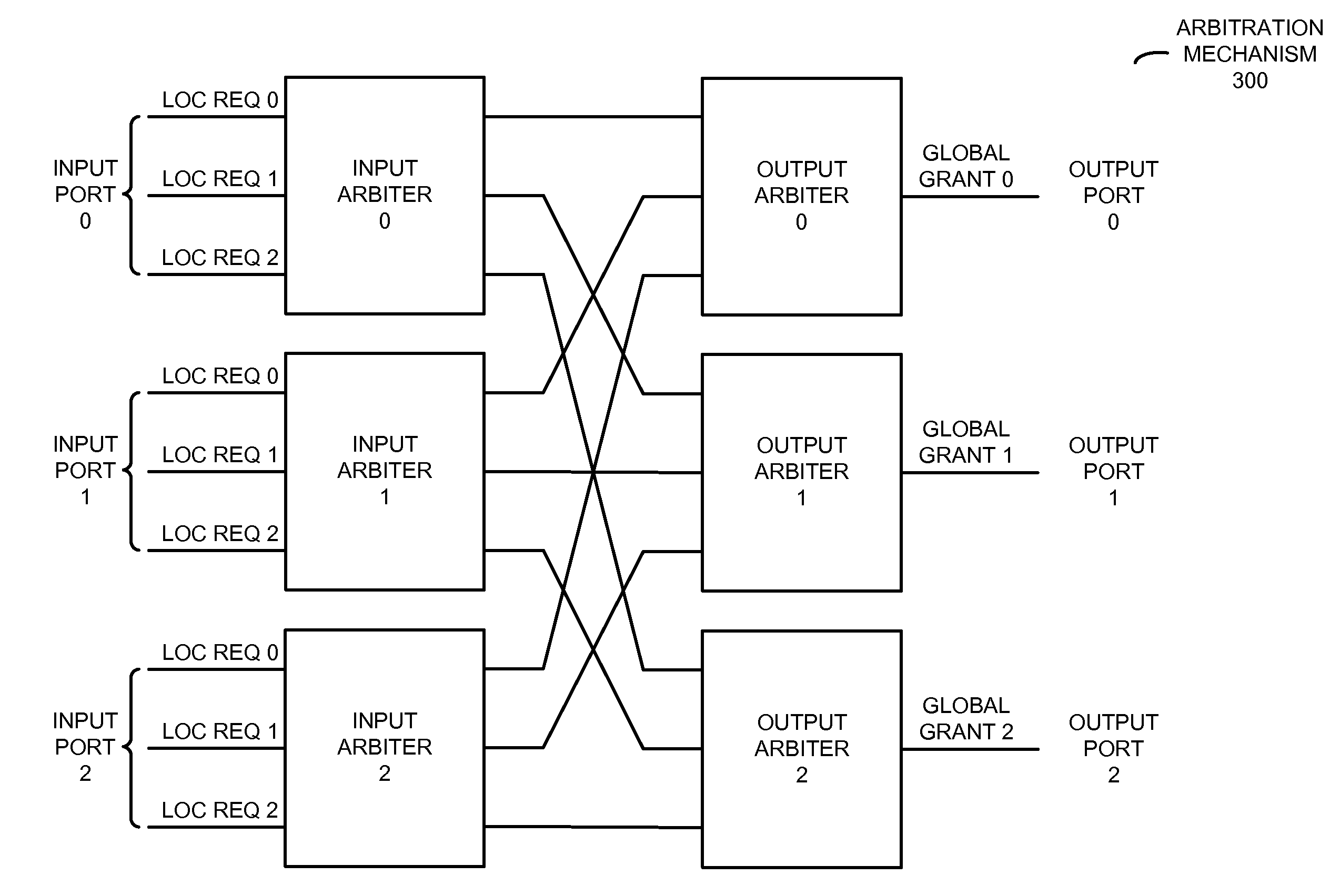Prediction-based switch allocator
a prediction-based, allocator technology, applied in the direction of digital transmission, data switching network, electrical apparatus, etc., can solve the problems of wasting bandwidth on output links, complex design of switch allocators, and often non-trivial arbitrage calculations
- Summary
- Abstract
- Description
- Claims
- Application Information
AI Technical Summary
Benefits of technology
Problems solved by technology
Method used
Image
Examples
Embodiment Construction
[0029]Embodiments of an allocation circuit with an arbitration mechanism, a switch that includes the arbitration mechanism, and an arbitration technique for determining mappings for the switch are described. During a given arbitration decision cycle, the arbitration mechanism maintains, until expiration, a set of mappings from a subset of the input ports to a subset of the output ports of the switch. This set of mappings was determined during an arbitration decision cycle up to K cycles preceding the given arbitration decision cycle. Because the set of mappings are maintained, it is easier for the arbitration mechanism to determine mappings from a remainder of the input ports to the remainder of the output ports without collisions.
[0030]By introducing memory in the arbitration decision process, the prediction-based arbitration technique can improve router throughput (for example, up to 18%) while reducing arbitration collisions with low router latency. In addition, the arbitration t...
PUM
 Login to View More
Login to View More Abstract
Description
Claims
Application Information
 Login to View More
Login to View More - R&D
- Intellectual Property
- Life Sciences
- Materials
- Tech Scout
- Unparalleled Data Quality
- Higher Quality Content
- 60% Fewer Hallucinations
Browse by: Latest US Patents, China's latest patents, Technical Efficacy Thesaurus, Application Domain, Technology Topic, Popular Technical Reports.
© 2025 PatSnap. All rights reserved.Legal|Privacy policy|Modern Slavery Act Transparency Statement|Sitemap|About US| Contact US: help@patsnap.com



